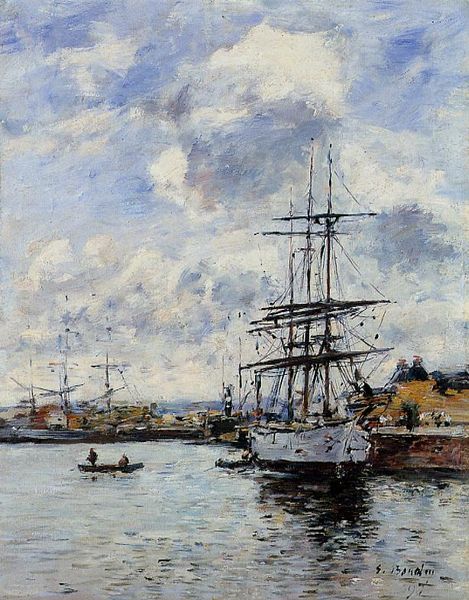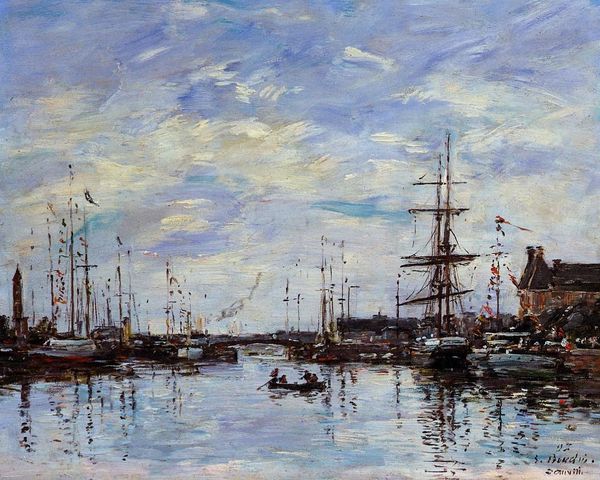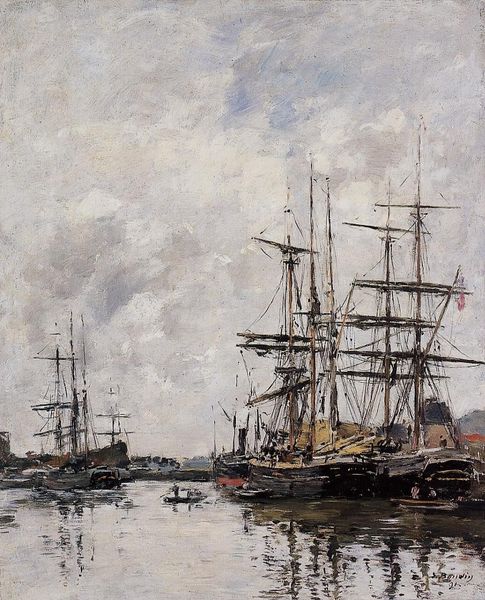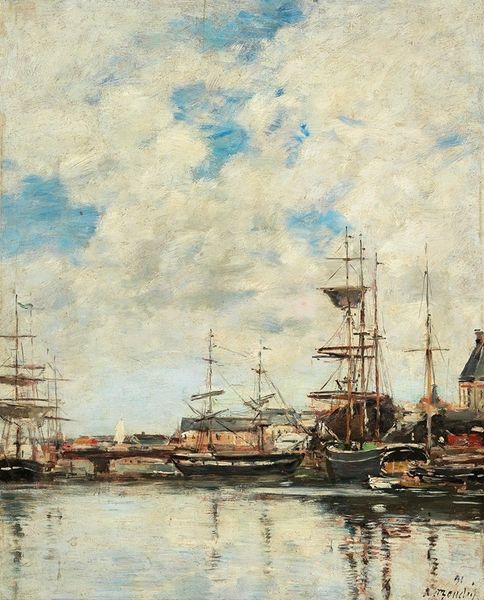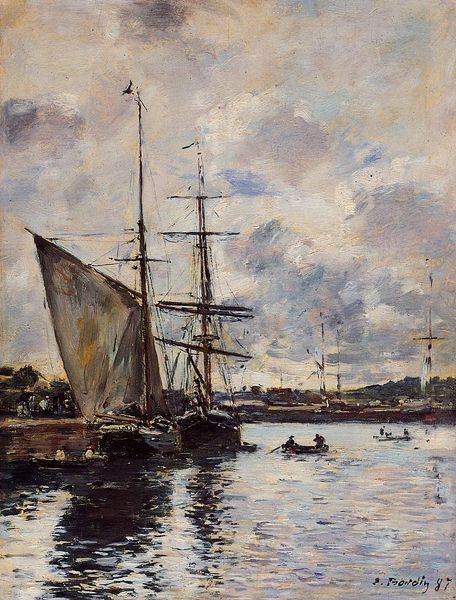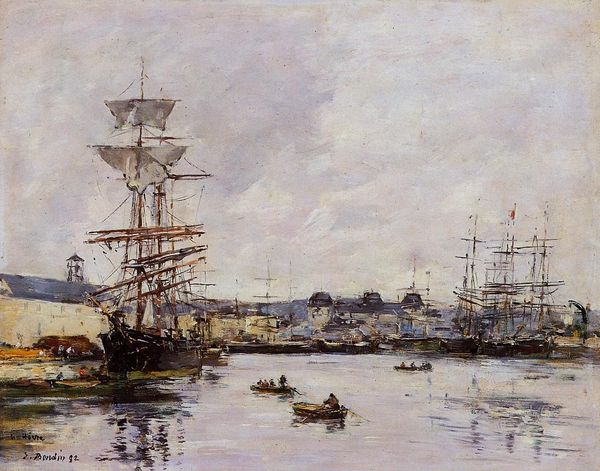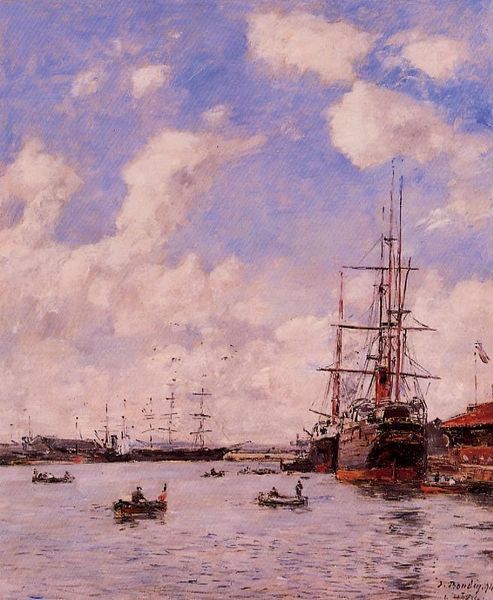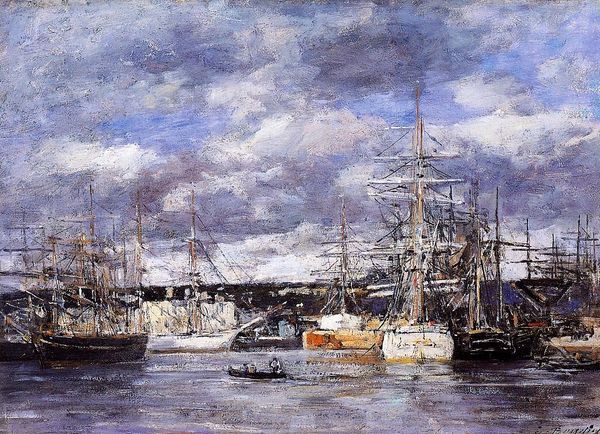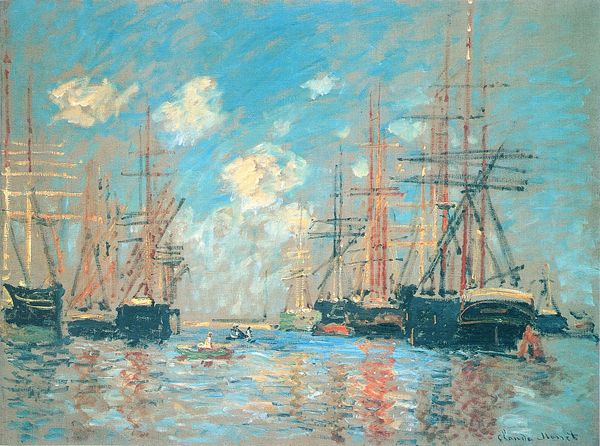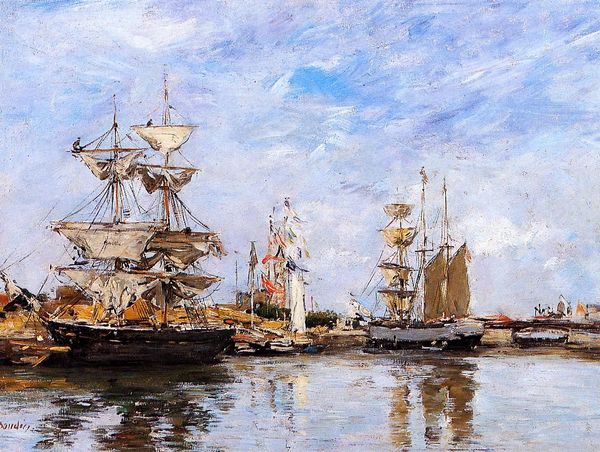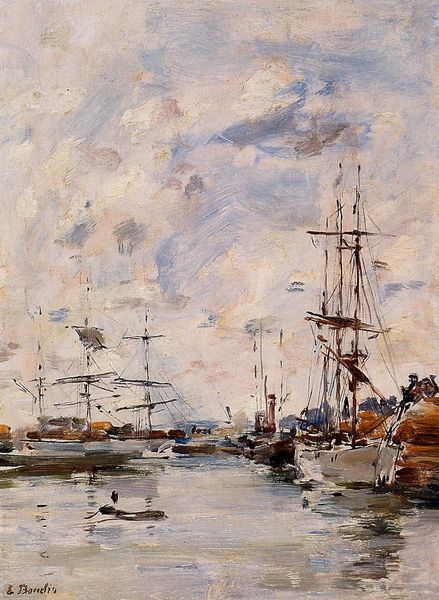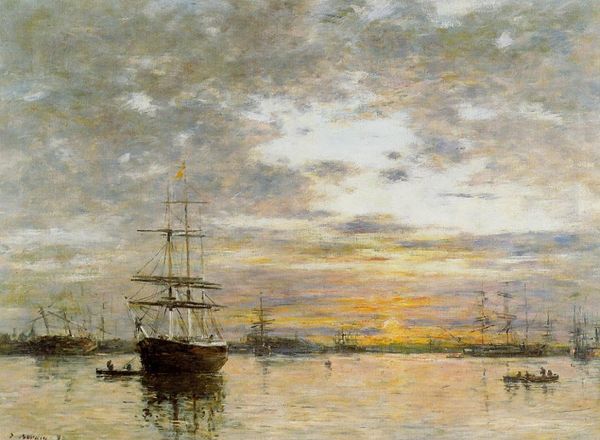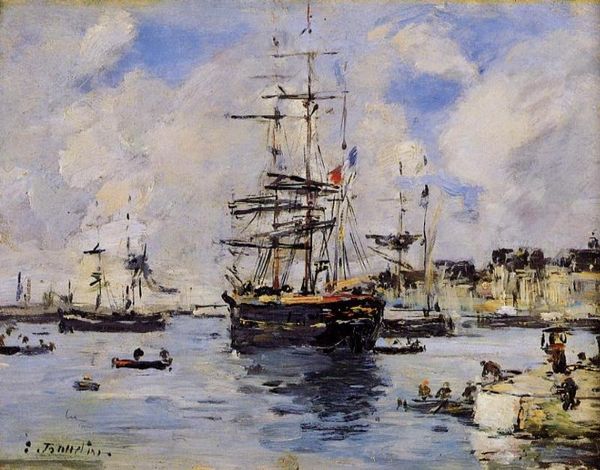
Copyright: Public domain
Eugène Boudin painted 'Near Rotterdam' with oil on canvas, capturing a Dutch harbor bustling with maritime activity. Boudin, working in the 19th century, was a key figure in the move towards Impressionism, a movement rooted in depicting the fleeting effects of light and atmosphere, but also a movement that was tightly bound up with the changing social function of art. Here, Boudin presents a scene of commerce and industry, with various ships and smaller boats populating the waterway. The Netherlands, with its extensive maritime history and economic reliance on shipping, provides a specific cultural context. Boudin's interest in depicting these scenes reflects the increasing importance of trade and maritime power in the 19th century. This painting could be read as a celebration of Dutch maritime prowess and commercial activity, while also anticipating a more modern, informal aesthetic. To fully understand a painting like this, we can explore records of Dutch maritime history and art criticism of the period. The meaning of art is always contingent on its social and institutional context.
Comments
No comments
Be the first to comment and join the conversation on the ultimate creative platform.
